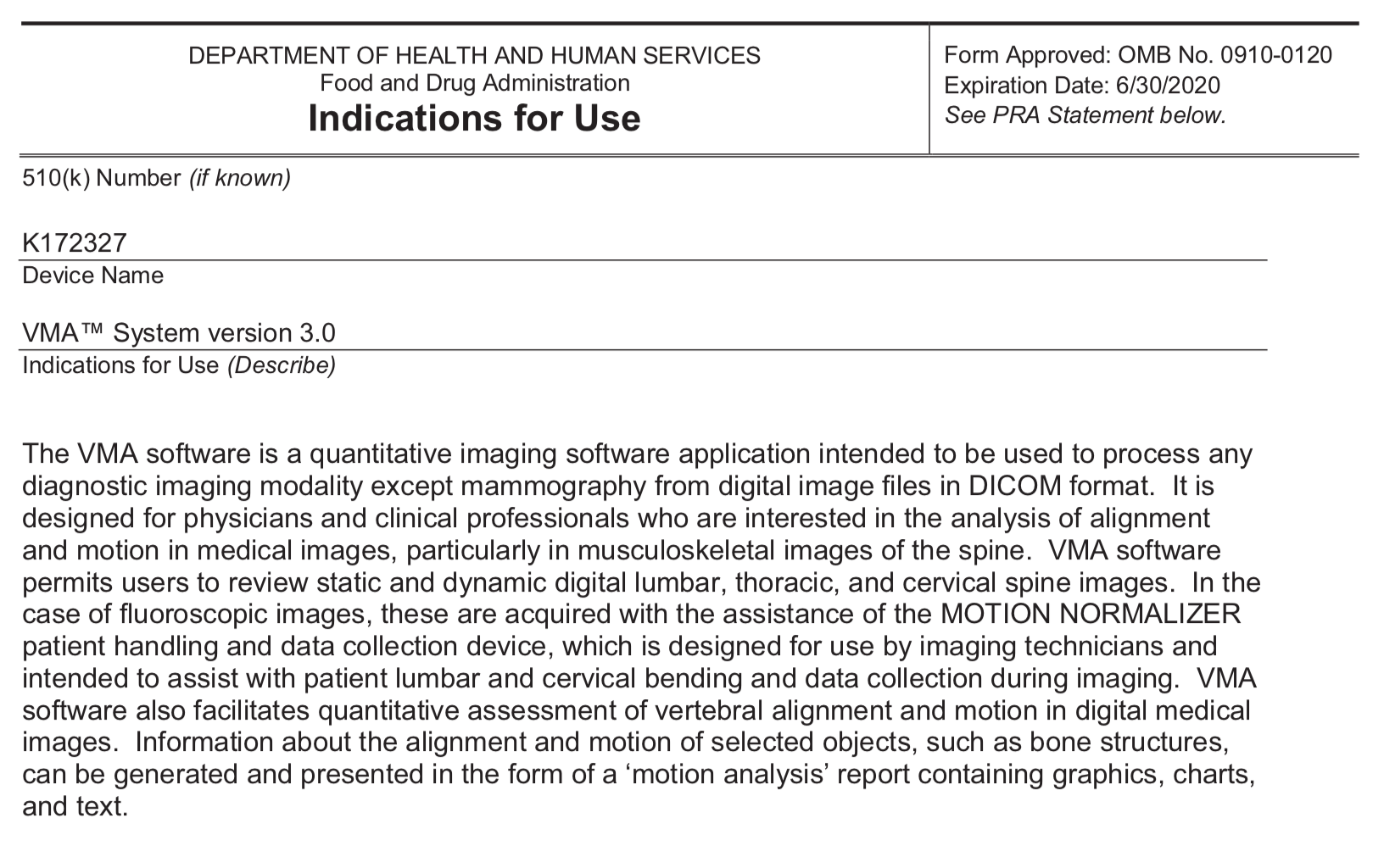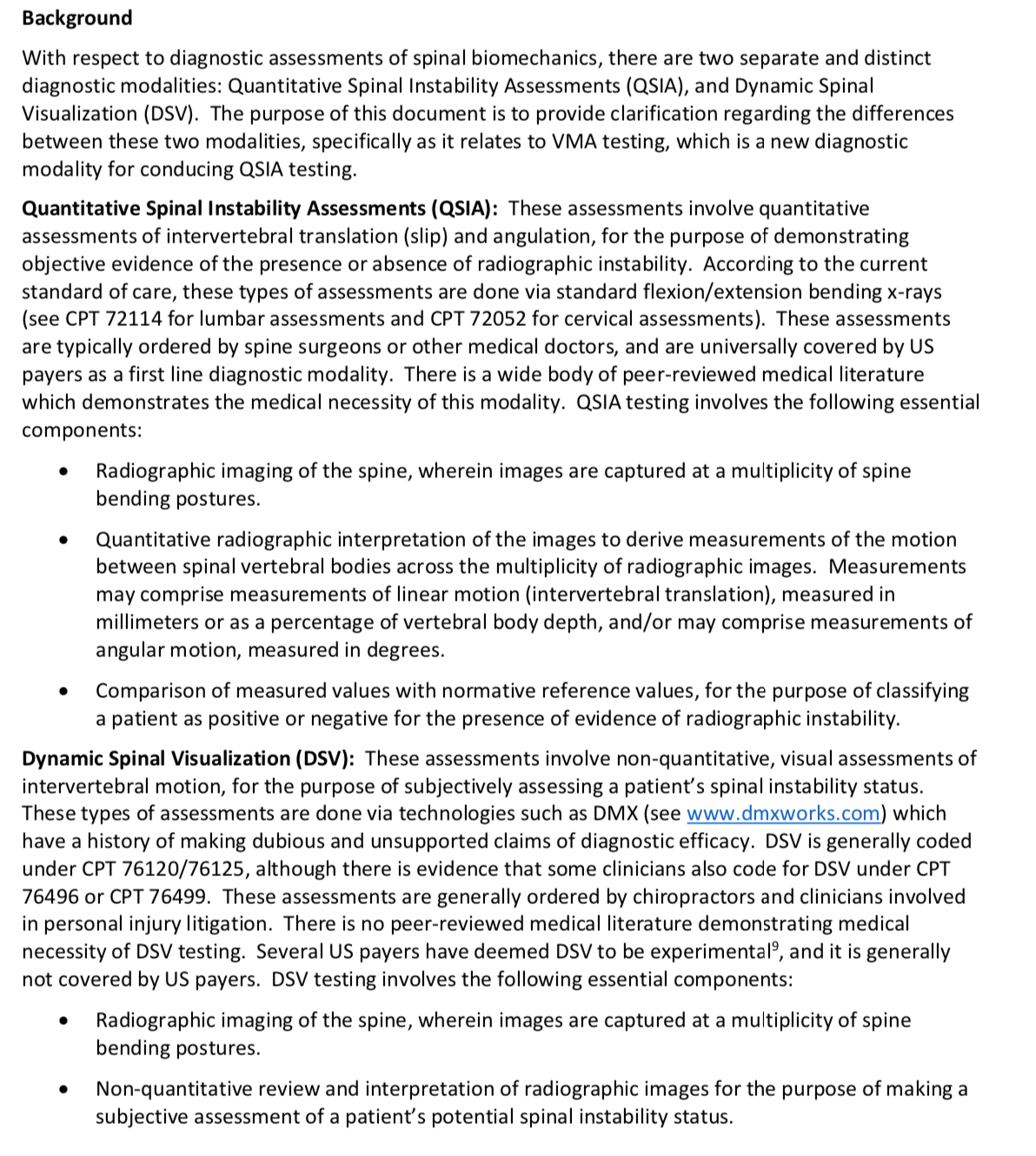Vertebral Motion Analysis (VMA) by AOMSI Diagnostics is a game-changing spinal imaging technology.
It has been shown to be one of the most accurate, specific, sensitive, and reliable ways to evaluate the spine and spinal injuries.
VMA
Controlled, Quantitative, Objective
Controlled Motion: bolstered & guided motion improves sensitivity and maintains specificity (Davis, IJSS, 2015)
Reduced Radiation Setting: Pulsed fluoro (8 frames per second) proven accurate for repeatable (Yeager, Spine J, 2014)
Less Total Radiation: 25% less radiation compared to a four view flexion/extension x-ray series (Mellor, Radiography, 2014)
Includes Classic Flexion/Extension: for comparison and calculation
Stabilization & Detailed Views: Isolates individual vertebral levels to get both quantitative and visual information. Any caudal vertebral body can be stabilized for assessment
Quantified output: report of spinal motion, repeatable, independent
Data: Spine Journal 2013 Runner Up Paper of the Year
Generally Covered by Insurers
DMX
Uncontrolled, Qualitative, Subjective





